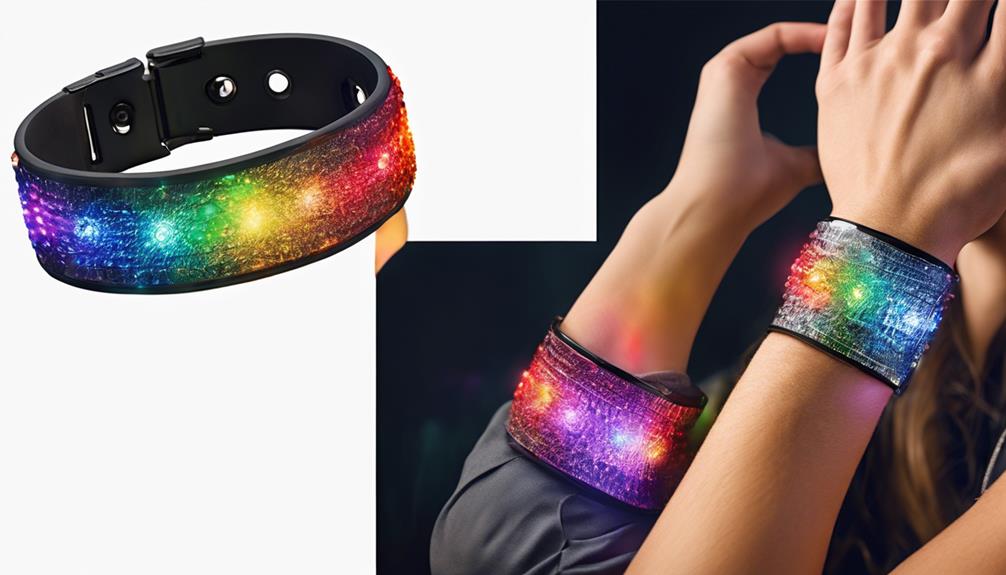To travel solo as a deaf adventurer, prepare your documents, emergency contacts, and visual aids in advance. Use helpful apps like speech-to-text, sign language interpreters, and captioning tools to communicate effortlessly. Learn basic local phrases or gestures, and plan your transportation with visual signs and maps. Seek out deaf-friendly services and connect with local communities. If you want to discover more ways to make your journey safe and enriching, keep exploring for additional tips.
Key Takeaways
- Prepare digital and physical copies of travel documents, emergency contacts, and local resources for quick access.
- Use gesture interpretation, captioning apps, and visual aids to communicate effectively with locals.
- Research accessible transportation options, local sign language resources, and confirm services with accommodations beforehand.
- Engage with local deaf communities and participate in culturally immersive activities using visual communication tools.
- Carry visual alert systems, keep devices charged, and familiarize yourself with emergency procedures for safety.
Preparing Your Travel Documents and Emergency Info
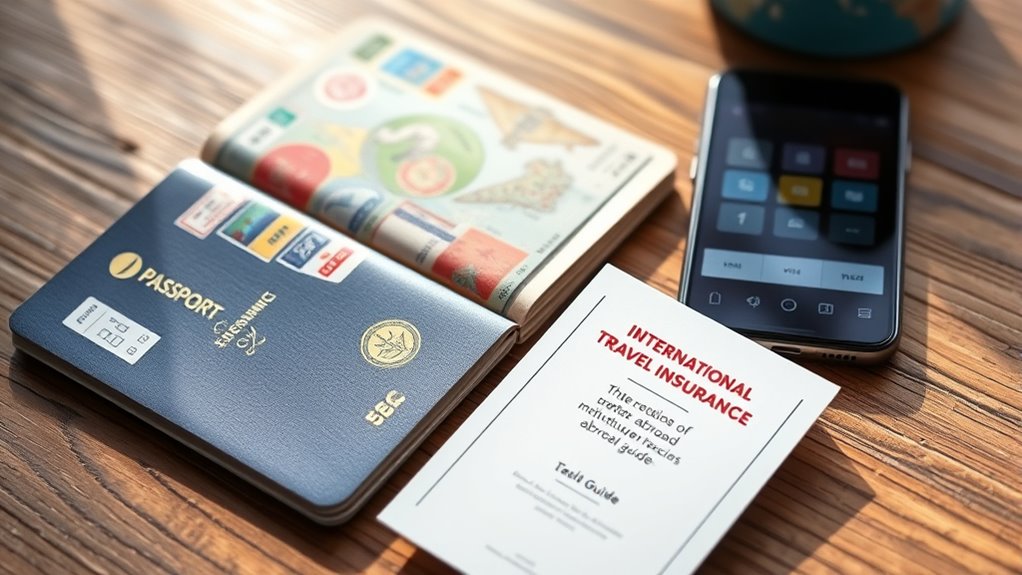
To guarantee a smooth solo trip, you should start by organizing your travel documents and emergency information well in advance. Make sure your travel insurance covers medical needs and emergencies specific to your destination. Check visa requirements early, as some countries need visas obtained beforehand, while others offer visas on arrival. Keep digital and physical copies of your passport, travel insurance, visa approvals, and emergency contacts. It’s wise to include details like local embassy addresses and emergency numbers. Additionally, consider downloading relevant apps or creating quick-reference charts for emergency procedures. Having everything accessible and well-prepared will reduce stress if issues arise, ensuring you can handle unexpected situations confidently and swiftly.
Mastering Communication Tools and Apps

Having your travel documents organized is a great start, but effective communication during your trip is equally important. Mastering communication tools and apps can make all the difference. Use gesture interpretation apps to help you convey your needs quickly, especially in unfamiliar settings. Real-time captioning apps are invaluable for conversations with locals, hotel staff, or tour guides, providing instant text of spoken words. Many smartphones also support speech-to-text features, allowing you to follow spoken instructions effortlessly. Familiarize yourself with these tools before your trip, so they become second nature. Keep your devices charged and carry portable chargers. Additionally, understanding the horsepower of electric dirt bikes can help you choose appropriate transportation options or recreational activities during your travels. By leveraging gesture interpretation and real-time captioning, you stay connected and independent, making your solo adventures more enjoyable and stress-free.
Navigating Public Transportation Safely and Confidently
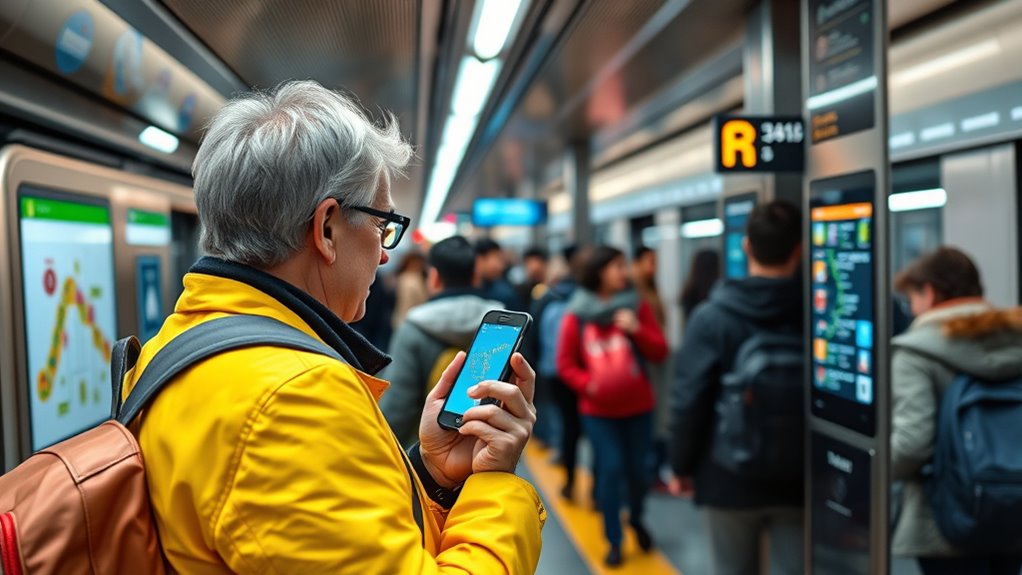
Navigating public transportation can feel intimidating, but with careful preparation, you can do it safely and confidently. Start with ticketing tips: use mobile apps or kiosks to purchase tickets ahead of time, avoiding lines or confusion. Route planning is essential—study maps and schedules in advance to identify your stops and transfer points. Keep a small notebook or digital note with your route details for quick reference. To stay alert, look for visual signs and announcements, and consider using vibration alerts on your phone. Additionally, understanding the Grobal World context—such as different transit systems and signage—can help you adapt quickly in unfamiliar environments. Here’s a quick guide:
| Step | Tip | Tool/Method |
|---|---|---|
| 1 | Buy tickets early | Mobile app or kiosk |
| 2 | Plan your route | Transit maps and schedules |
| 3 | Stay alert | Visual signs and vibrations |
| 4 | Confirm stops | Use stop announcements or apps |
With preparation, public transit becomes a safe, efficient way to explore.
Finding Deaf-Friendly Services and Resources
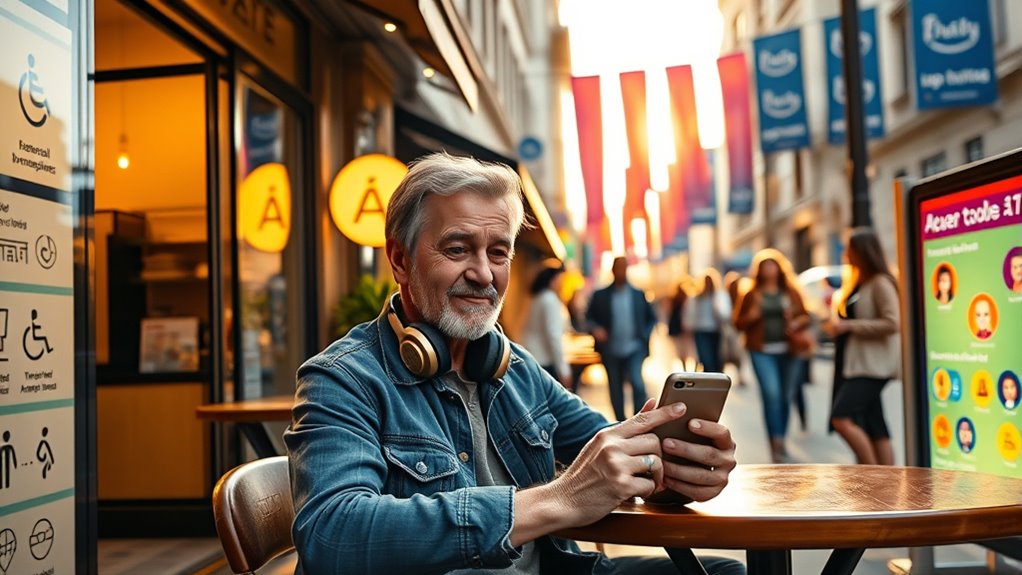
When searching for accommodations, look for places that offer accessible features like visual alerts or TTY services. Check if local guides or activity providers include sign language interpreters or materials in ASL. Using resources tailored for deaf travelers can make your adventures smoother and more enjoyable. Additionally, understanding home theatre projectors can help you plan your entertainment setup during travel, ensuring a comfortable and immersive experience wherever you go.
Accessible Accommodations Options
Finding accommodations that cater to deaf travelers requires some extra research, but the effort guarantees a smoother and more comfortable stay. Look for places that offer sensory-friendly environments, minimizing loud noises and bright lights that can be overwhelming. Many hotels now provide adaptive technology options, such as visual alert systems for doorbells, alarms, and phone calls, which help you stay connected and safe. When booking, ask about these features upfront to ensure they meet your needs. Also, consider contacting hotels directly to confirm their accessibility services or to request specific accommodations. Choosing accommodations that prioritize accessibility not only enhances your comfort but also allows you to focus on your adventures without unnecessary stress. A little preparation goes a long way in creating a seamless travel experience, especially when understanding privacy and cookie usage can help you manage your online interactions more effectively.
Sign Language Service Availability
How can you guarantee you have access to sign language services while traveling? Start by researching local resources beforehand, such as sign language interpreters and organizations that offer service accessibility for deaf travelers. Many hotels and tourist spots now provide or can arrange for sign language interpreters upon request. Download apps that connect you with on-demand interpreters for quick assistance. It’s also helpful to reach out to local deaf communities or advocacy groups—they often know where to find deaf-friendly services. When booking accommodations or activities, ask specifically about sign language interpreter availability or accessible communication options. Planning ahead assures you won’t face unexpected barriers and helps you enjoy your trip with confidence and independence. Additionally, understanding available communication accommodations can significantly enhance your travel experience and ensure your needs are met seamlessly.
Deaf-Friendly Activity Guides
Having access to deaf-friendly activity guides can considerably enhance your travel experience by connecting you with services and resources tailored to your needs. These guides highlight accessible venues, events, and local tips to navigate cultural etiquette smoothly. To make the most of your trip, consider carrying the right travel gear, like portable visual alert systems and note-taking tools. When exploring new destinations, look for guides that emphasize deaf-friendly options, such as:
- Venues with visual or captioned services
- Local organizations supporting deaf travelers
- Tips on respectful cultural etiquette
Using these guides helps you find inclusive activities and ensures you’re prepared for different social norms. Additionally, understanding top anime movies and animated films that touch hearts can enrich your cultural experience, making your travels more engaging and memorable. With the right resources, your solo adventure becomes more comfortable and enriching, allowing you to focus on the experience ahead.
Connecting With Fellow Travelers and Locals

Connecting with fellow travelers and locals can open up new experiences and friendships. Building relationships often starts with a smile or a simple gesture, even without spoken words. Using visual communication tools like gestures or translation apps makes it easier to share moments and understand each other.
Building Local Relationships
Building relationships with locals and fellow travelers can substantially enrich your solo adventure, especially when you navigate communication barriers. To foster genuine connections, focus on developing cultural understanding—respect local customs and traditions. Overcoming language barriers is easier with some prep, like learning basic phrases or using translation apps. You can also leverage non-verbal cues to communicate effectively. Consider these tips:
- Attend local events or workshops to immerse yourself and meet people.
- Use gestures and facial expressions to bridge language gaps.
- Join group activities or guided tours designed for travelers.
- Recognizing the importance of Dog names can also serve as a fun icebreaker or conversation starter with locals and fellow travelers.
These strategies help you connect authentically, making your experience more meaningful and memorable. Building local relationships not only enhances your trip but also deepens your understanding of the culture around you.
Using Visual Communication Tools
When language barriers make spoken communication difficult, visual tools can be powerful allies in connecting with both locals and fellow travelers. Carrying visual aids like picture cards or translation charts helps you convey basic needs or questions quickly. Additionally, using sign language apps on your phone can bridge gaps in understanding, providing instant translation and sign language practice. These tools enable smoother interactions, whether you’re ordering food, asking for directions, or making new friends. Learning a few basic signs or phrases beforehand can also boost your confidence. Visual communication tools are flexible, portable, and effective, making your solo adventures more enjoyable. They foster genuine connections and help you navigate unfamiliar environments with greater ease and independence.
Staying Safe and Accessing Assistance When Needed
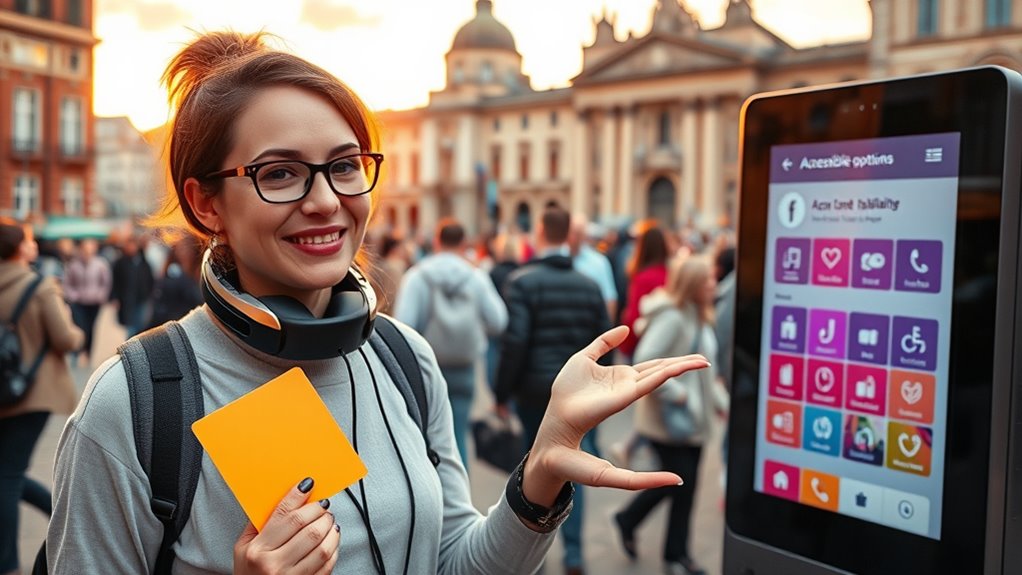
Staying safe and getting help quickly are essential skills for deaf travelers exploring alone. When faced with medical emergencies or threats to personal safety, quick access to assistance can be life-saving. Make sure you have multiple ways to alert others, such as a mobile app with emergency features, a portable visual alert device, or a pre-arranged signal with local contacts. Keep important information, like medical conditions and emergency contacts, easily accessible. Familiarize yourself with local emergency numbers and services. Also, consider carrying a visual or written note explaining your situation in case you cannot speak. To stay prepared:
- Use visual alert systems for emergencies
- Keep a charged phone with emergency apps installed
- Share your itinerary and safety plan with trusted contacts
Frequently Asked Questions
How Can I Ensure My Travel Insurance Covers Deaf-Related Emergencies?
To guarantee your travel insurance covers deaf-related emergencies, review policies carefully and ask about services like sign language interpretation. Make certain your plan includes emergency communication plans tailored to your needs. Carry essential information, such as your preferred communication methods, and inform your insurer upfront. This way, you’ll have access to prompt assistance and effective communication during unexpected situations, giving you peace of mind while exploring new destinations.
What Are the Best Ways to Find Deaf-Friendly Accommodations Abroad?
Imagine walking into a hotel where signs of welcome are painted on the walls, making you feel at home. To find deaf-friendly accommodations abroad, use sign language apps for quick communication and search for deaf-friendly hotels that cater specifically to your needs. Read reviews, contact hotels directly, and look for establishments with visual alert systems. These steps guarantee you’re comfortable, understood, and connected during your journey.
How Can I Learn Basic Local Signs Before My Trip?
You can learn basic local signs before your trip by using sign language apps, which often include common phrases and gestures. Practice daily to build confidence in essential communication. Focus on basic sign phrases like greetings and directions, so you feel more comfortable connecting with locals. Watching videos or tutorials specific to the region’s sign language can also help you pick up useful signs quickly and effectively.
What Should I Do if I Encounter Communication Barriers in Emergency Situations?
Oh, because emergencies are so predictable, right? When communication barriers hit, don’t panic—stay calm and try to use your sign language resources or write down essential info. Emergency communication can be tricky, but having a visual aid or app handy helps. Remember, your knowledge of basic signs and prepared gestures can be lifesavers, making it easier for responders to understand you when words fail.
How Can I Connect With Other Deaf Travelers for Support and Advice?
You can connect with other deaf travelers by attending deaf community events and sign language meetups. These gatherings offer great opportunities to share experiences, gain support, and exchange travel tips. Use social media groups or travel forums focused on deaf travelers to find nearby events or meetups during your trips. Engaging with these communities helps you build a supportive network, making solo travel more enjoyable and less isolating.
Conclusion
With these hacks in your toolkit, solo travel becomes a well-charted map rather than uncharted territory. You’re the captain of your journey, steering confidently through unfamiliar waters. Remember, preparation and resourcefulness are your compass, guiding you to safe harbors and new connections. Embrace the adventure with confidence, knowing you’ve got the skills to navigate every twist and turn. Your path is yours to explore—trust in your abilities and enjoy the voyage ahead.




